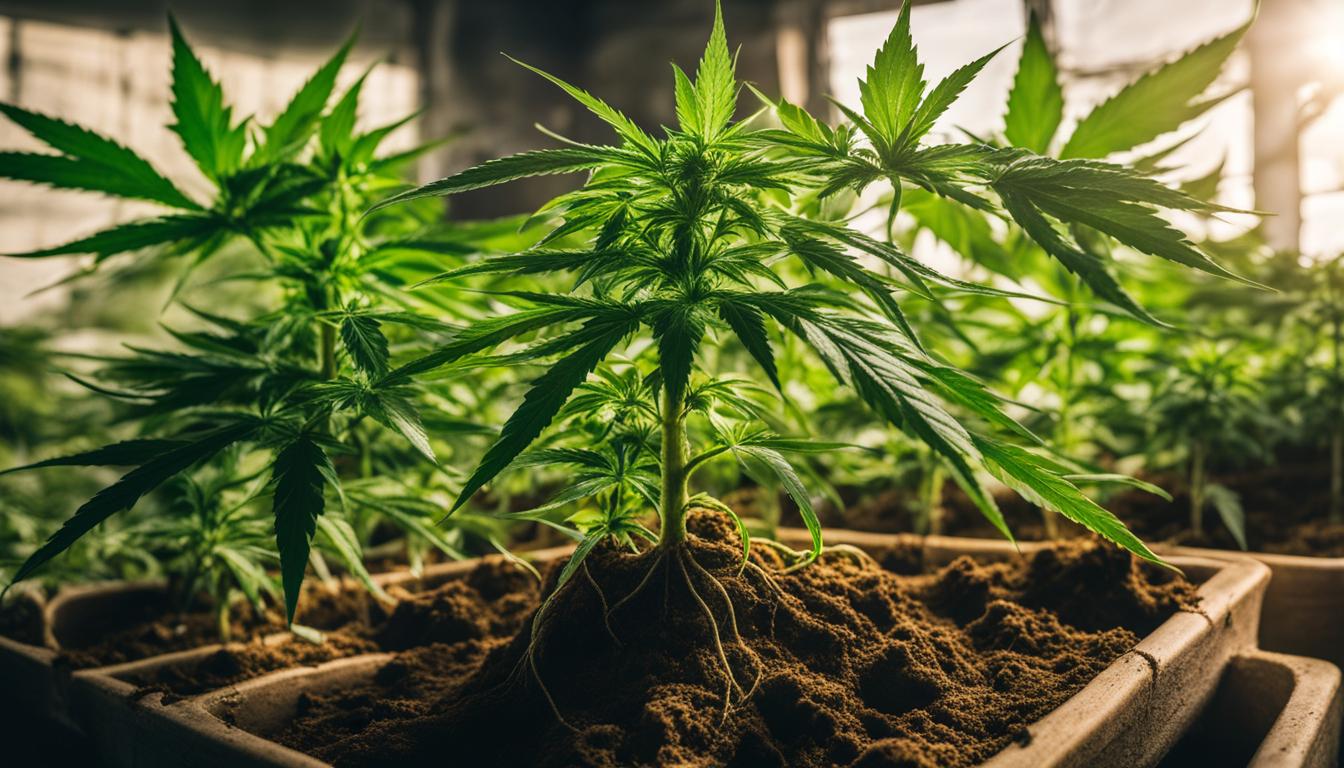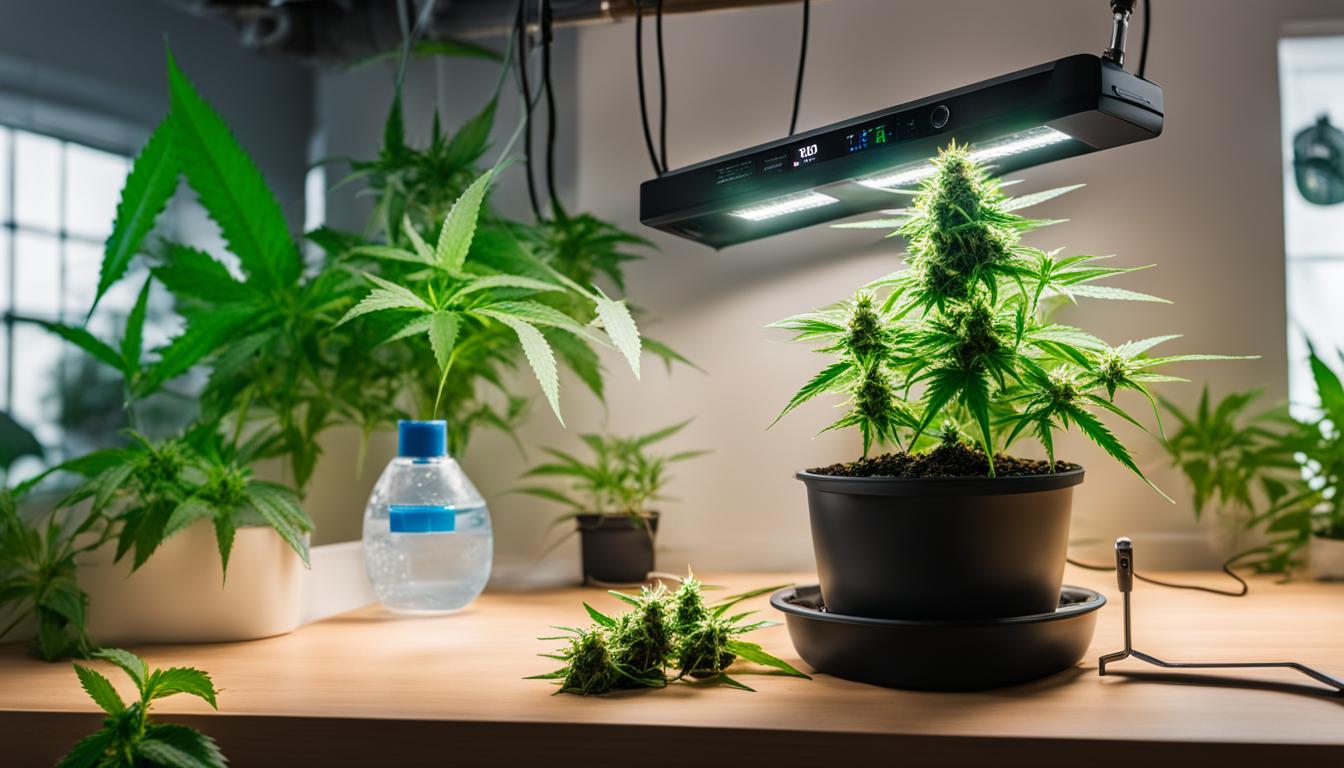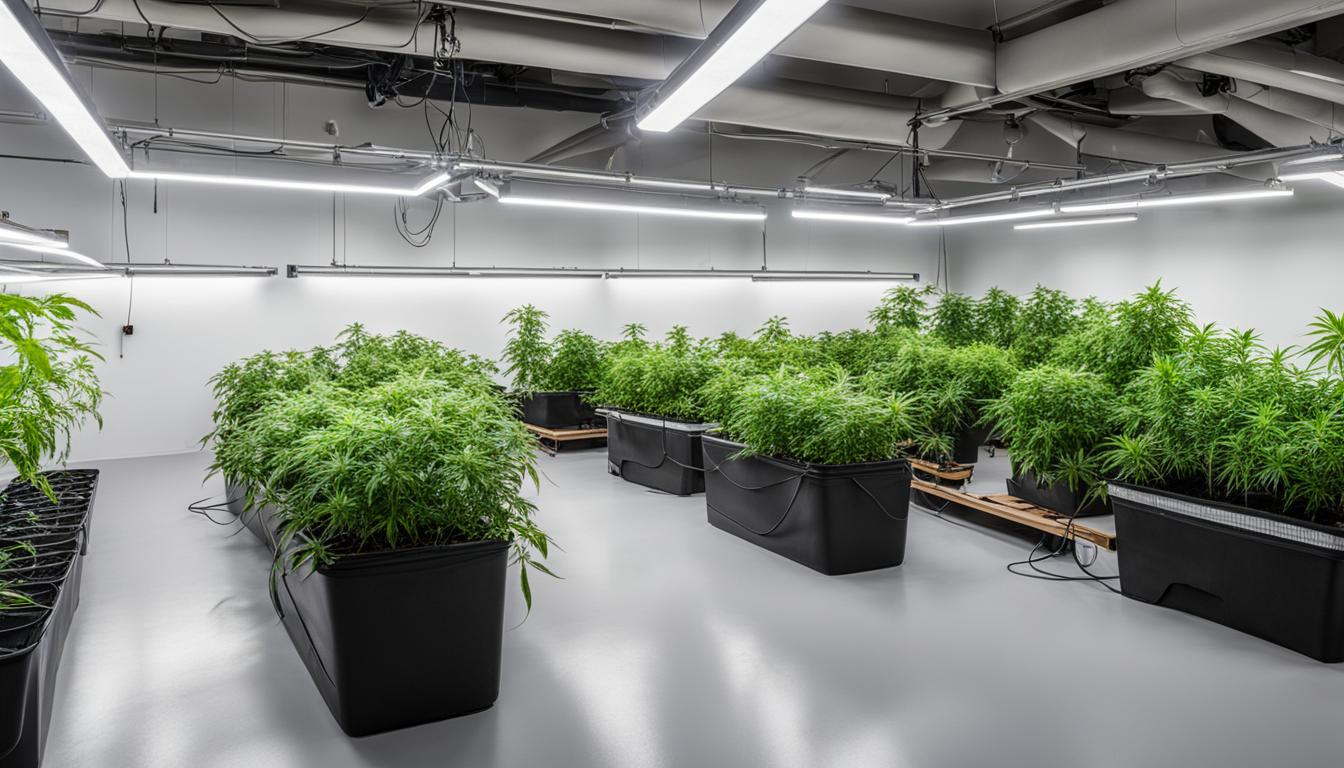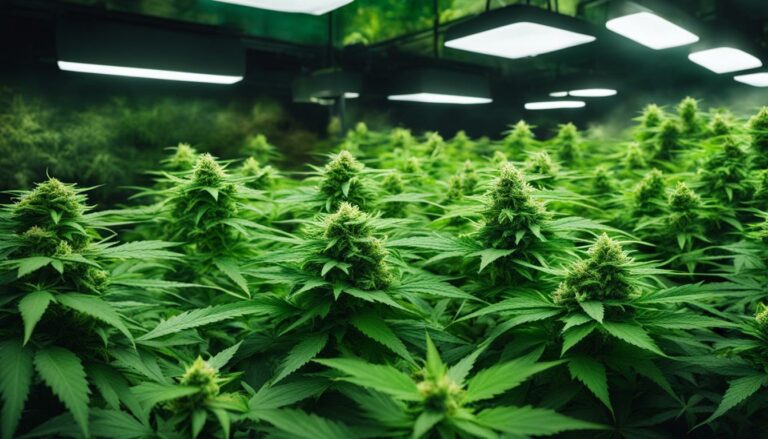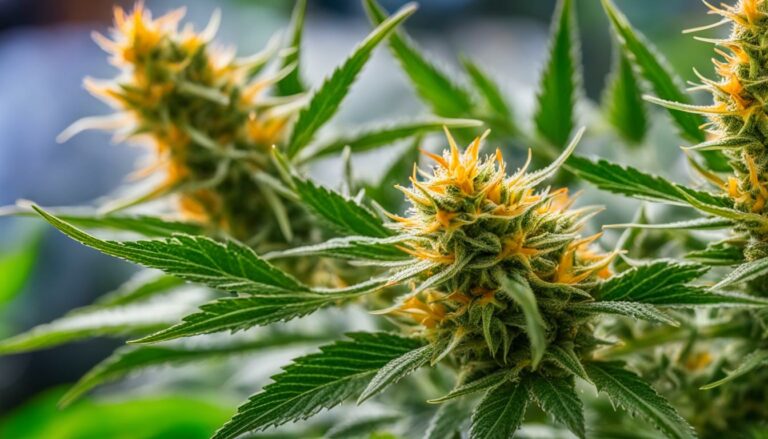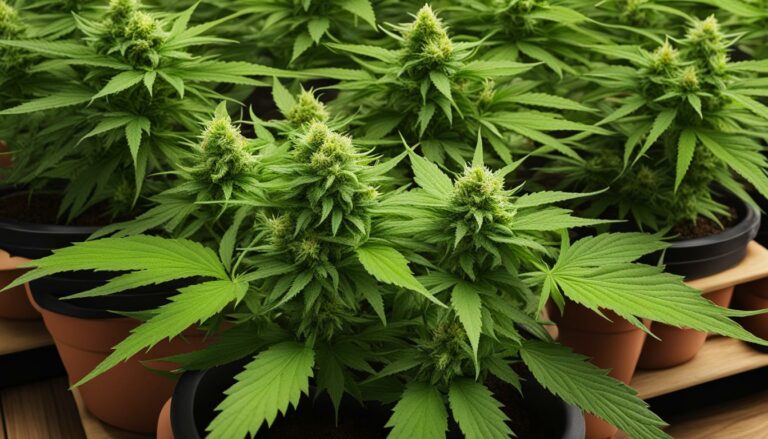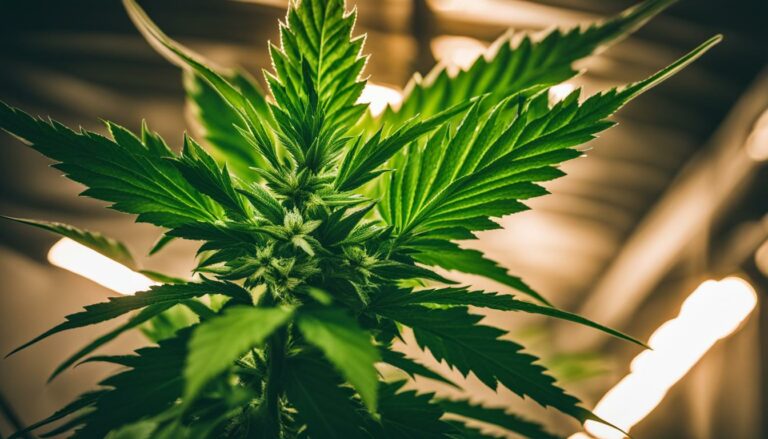Understanding Cannabis Nutrient Requirements
Welcome to our comprehensive guide on cannabis nutrient requirements. If you are a cannabis cultivator, knowing the specific nutrient needs of your plants is essential for achieving optimal growth and maximizing yields. In this guide, we will explore the various macro and micronutrients that cannabis plants require, the different stages of nutrient requirements, and the importance of choosing the right organic or chemical fertilizers. Whether you are a beginner or an experienced grower, this cannabis nutrient guide will provide you with valuable insights to cultivate healthy and thriving plants.
The Role of Macro and Micronutrients in Cannabis Growth
Cannabis plants, like any other plant, require a balance of macro and micronutrients to support their growth and development. These nutrients play critical roles in various physiological processes, ensuring that the plants thrive and produce high-quality yields. Understanding the specific role of each nutrient is essential for optimizing cannabis cultivation.
Macronutrients, such as nitrogen (N), phosphorus (P), and potassium (K), are required by cannabis plants in larger quantities. Nitrogen promotes vigorous vegetative growth, helping the plants develop lush foliage and strong stems. Phosphorus is essential for energy transfer and root development, while potassium aids in overall plant resilience and flower formation. The NPK ratio, commonly found on fertilizer product labels, indicates the relative proportions of these macronutrients.
| Nutrient | Role |
|---|---|
| Nitrogen (N) | Promotes vegetative growth |
| Phosphorus (P) | Enhances energy transfer and root development |
| Potassium (K) | Aids in plant resilience and flower formation |
In addition to macronutrients, cannabis plants also require a variety of secondary nutrients and micronutrients. Secondary nutrients, including calcium (Ca), magnesium (Mg), and sulfur (S), are needed in moderate amounts and contribute to overall plant health. Micronutrients, such as boron (B), chlorine (Cl), copper (Cu), iron (Fe), manganese (Mn), molybdenum (Mo), and zinc (Zn), are essential in trace amounts, supporting various enzymatic functions and metabolic processes.
“Providing cannabis plants with the right balance of macro and micronutrients is like giving them the fuel and building blocks they need to reach their full potential. By understanding the role of each nutrient and maintaining optimal ratios, growers can ensure healthy, vibrant plants and bountiful harvests.”
It’s important to note that nutrient ratios can vary depending on the specific growth stage of the plants. During the vegetative stage, higher levels of nitrogen are typically required to promote lush foliage growth. As the plants transition to the flowering stage, phosphorus and potassium become more important for flower development and resin production. By adjusting nutrient levels according to the specific needs of each growth stage, growers can provide their cannabis plants with the precise nutrition they require.
Understanding Nutrient Requirements During Different Growth Stages
As cannabis plants progress through different growth stages, their nutrient requirements change to support optimal development. It is crucial for growers to understand these nutrient needs and adjust their feeding regimen accordingly. By providing the right nutrients at the right time, growers can ensure healthy plant growth, robust root systems, and bountiful yields.
Nutrient Requirements for Seedlings
During the seedling stage, cannabis plants primarily rely on the nutrients stored in the seed itself. Additional feeding is not necessary until the plant develops true leaves, typically around two to three weeks after germination. At this stage, it is important to start introducing a gentle nutrient solution with a balanced ratio of macro and micronutrients. Seedlings require a higher percentage of phosphorus and potassium to support root development and establish a strong foundation for future growth. However, it is important to avoid overfeeding, as this can lead to nutrient burn and stunted growth.
Nutrient Requirements for the Vegetative Stage
During the vegetative stage, cannabis plants experience rapid growth and require higher levels of nitrogen to support the development of lush foliage and strong stems. Nitrogen is essential for chlorophyll synthesis and overall plant vigor. A well-balanced nutrient solution with higher nitrogen content and an adequate amount of phosphorus and potassium is key to promoting healthy vegetative growth. It is important to monitor the plants closely for any signs of nutrient deficiencies or imbalances, and adjust the feeding regimen accordingly.
Nutrient Requirements for the Flowering Stage
As cannabis plants transition to the flowering stage, their nutrient requirements shift to prioritize the development of flowers and resin production. At this stage, phosphorus and potassium become more important. Phosphorus promotes flower formation and enhances bud development, while potassium plays a crucial role in overall plant health, nutrient uptake, and the production of essential oils. It is important to adjust the nutrient levels to provide a higher ratio of phosphorus and potassium while reducing nitrogen content. This shift in nutrient balance helps ensure optimal flower formation and maximize resin production, leading to higher quality yields.
By understanding and meeting the nutrient requirements of cannabis plants during each growth stage, growers can nurture healthy plants and achieve the best possible results. The precise nutrient ratios and feeding frequencies may vary depending on the specific strain, growing medium, and environmental factors. It is important to closely monitor the plants, observe any signs of nutrient deficiencies or excesses, and make appropriate adjustments to the feeding regimen to optimize plant growth and maximize yields.
| Stage | Nutrient Requirements |
|---|---|
| Seedling | Higher percentage of phosphorus and potassium for root development |
| Vegetative | Higher levels of nitrogen to support lush foliage and strong stems |
| Flowering | Higher ratio of phosphorus and potassium for flower and resin development |
Organic vs. Chemical Fertilizers for Cannabis
When it comes to nourishing your cannabis plants, there are two main options to consider: organic fertilizers and chemical fertilizers. Both options have their pros and cons, and choosing the right one for your cultivation needs can greatly impact the health and performance of your plants.
Pros and Cons of Organic Nutrients
Organic fertilizers are derived from natural sources such as compost, manure, or bone meal. They provide a slow-release form of nutrients that are gradually broken down by microorganisms in the soil. This slow release helps promote soil health and microbial activity, fostering a more balanced ecosystem for your plants.
One of the major advantages of organic nutrients is their ability to improve soil structure and water retention. They help build up organic matter, allowing the soil to hold moisture and nutrients more effectively. Organic fertilizers also tend to be less prone to causing nutrient burn or toxicity, as the nutrients are released slowly and are less likely to accumulate to harmful levels.
However, organic nutrients are often more expensive than chemical fertilizers and may require more frequent applications to maintain optimal nutrient levels. They can also be more challenging to use in hydroponic systems due to the risk of clogging the irrigation system with organic matter. Additionally, the nutrient ratios in organic fertilizers may not be as precise or customizable as their chemical counterparts.
Pros and Cons of Chemical Nutrients
Chemical fertilizers, also known as synthetic or inorganic fertilizers, are manufactured from mineral salts or chemical compounds. They provide nutrients in a readily available form that can be quickly absorbed by plants. This allows for precise control over nutrient ratios, making it easier to tailor the feeding program to the specific needs of your cannabis plants.
One of the main advantages of chemical fertilizers is their convenience and efficiency. They dissolve easily in water and can be readily absorbed by the roots, providing quick results. They also tend to be more affordable and require less frequent applications compared to organic fertilizers.
However, the use of chemical fertilizers can have drawbacks. They can deplete beneficial microorganisms in the soil, impacting long-term soil health. Overuse or improper application of chemical fertilizers can also lead to nutrient imbalances, nutrient lockouts, and salt buildup in the soil, which can harm plant growth and yield potential.
| Organic Fertilizers | Chemical Fertilizers | |
|---|---|---|
| Pros | Slow-release nutrients | Readily available nutrients |
| Improve soil structure and water retention | Precise control over nutrient ratios | |
| Less prone to nutrient burn or toxicity | Convenient and efficient | |
| Cons | More expensive | Potential harm to soil health |
| May require more frequent applications | Possible nutrient imbalances | |
| Challenging to use in hydroponic systems | Potential salt buildup in the soil |
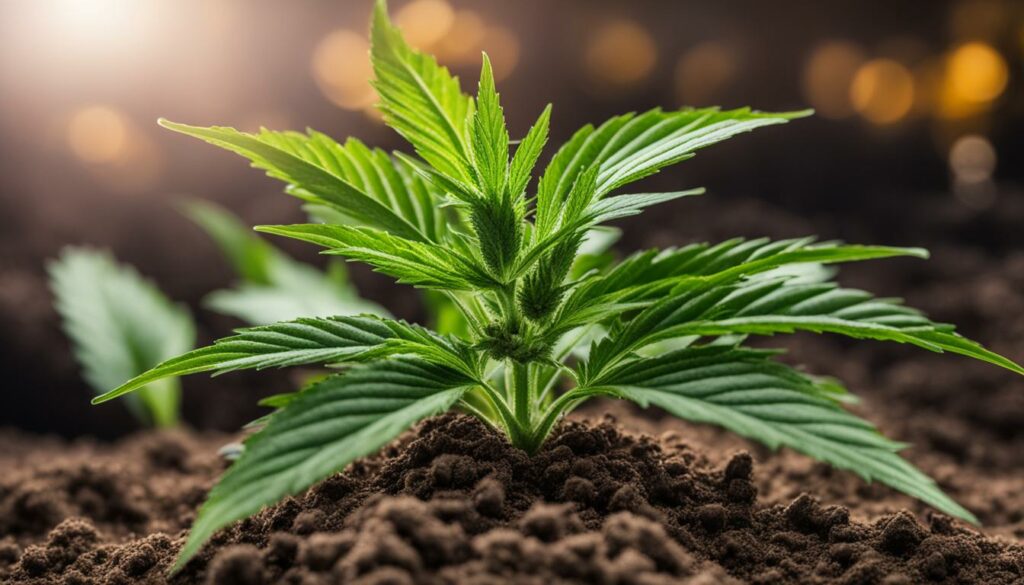
Ultimately, the choice between organic and chemical fertilizers depends on your personal preferences, cultivation goals, and specific growing conditions. Some growers prefer the natural approach of organic nutrients, appreciating their potential benefits for soil health and sustainability. Others prefer the precision and convenience offered by chemical fertilizers.
It is important to note that regardless of the type of fertilizer chosen, proper application and monitoring of nutrient levels are essential for successful cannabis cultivation. Regularly testing the pH and EC levels of the soil or nutrient solution, as well as closely observing the plants for any signs of nutrient deficiency or toxicity, will help ensure that your cannabis plants receive the optimal nutrients for healthy growth and abundant yields.
How to Read and Use a Cannabis Nutrient Schedule
A cannabis nutrient schedule, also known as a feed chart, is a valuable tool for cannabis growers. It provides guidance on when and how much to feed your plants during each growth stage, ensuring they receive the right nutrients at the right time. By following a nutrient schedule, you can maximize growth and yield potential. To make the most of a cannabis nutrient schedule, it’s essential to understand how to read and use it effectively.
The first step is to familiarize yourself with the different growth stages of cannabis plants: seedling, vegetative, and flowering. Each stage has unique nutrient requirements, and the nutrient schedule will outline the specific ratios and feeding frequencies recommended for each stage. Understanding these requirements will help you provide the appropriate nutrients at each stage of your plants’ development.
Interpreting the Nutrient Ratios
The nutrient schedule will typically display nutrient ratios using the NPK system, which stands for nitrogen (N), phosphorus (P), and potassium (K). These macronutrients are essential for plant growth, and their ratios will change depending on the growth stage. The nutrient schedule may also include secondary nutrients, such as calcium and magnesium, and micronutrients like iron and zinc.
When reading the nutrient ratios, it’s important to understand the numbers and their significance. For example, a nutrient ratio of 20-10-10 means that the fertilizer contains 20% nitrogen, 10% phosphorus, and 10% potassium. Different growth stages require different nutrient ratios, so be sure to follow the schedule’s recommendations to provide the right balance of nutrients for your plants.
Following the Feeding Frequency
The nutrient schedule will also indicate how often you should feed your cannabis plants. Feeding frequency can vary depending on factors such as the plant’s age, growing medium, and environmental conditions. The schedule may recommend daily, weekly, or bi-weekly feedings. It’s crucial to follow these recommendations to avoid over or underfeeding your plants, as nutrient imbalances can lead to nutrient deficiencies or toxicities.
Keep in mind that the feeding frequency may change as your plants progress through different growth stages. Seedlings, for example, may require less frequent feedings compared to plants in the vegetative or flowering stage. Always refer to the nutrient schedule for guidance on when and how often to feed your cannabis plants.
Monitoring and Adjusting
While nutrient schedules provide valuable guidance, it’s essential to monitor your plants closely and make adjustments as needed. Keep an eye on your plants’ overall health and appearance, as well as any signs of nutrient deficiencies or imbalances. If you notice any issues, such as yellowing leaves or stunted growth, it may indicate a nutrient problem.
In addition to visual cues, you can also measure the pH and electrical conductivity (EC) of your nutrient solution to ensure it is within the optimal range. Adjusting the pH and EC levels as necessary will help your plants absorb nutrients more effectively. Regularly monitor your plants and make any necessary adjustments to the nutrient schedule to ensure your cannabis plants receive the best care possible.
Summary
A cannabis nutrient schedule is a valuable tool for maximizing the growth and yield of your plants. By understanding how to read and use the schedule effectively, you can provide the right nutrients at the right time for each growth stage. Remember to interpret the nutrient ratios, follow the recommended feeding frequency, and monitor your plants closely for any signs of nutrient imbalances. With proper care and attention, your cannabis plants will thrive and produce exceptional results.
How to Prepare Cannabis Nutrients
Properly preparing cannabis nutrients is essential for a successful cultivation process. By following the right steps, you can ensure that your plants receive the correct balance of nutrients to support their growth and development. Here are some key aspects to consider when preparing cannabis nutrients:
- Mixing Nutrient Solutions: Start by accurately measuring and mixing the nutrients according to the manufacturer’s instructions. It’s important to follow the recommended ratios to avoid nutrient imbalances. Use clean measuring tools and containers to prevent contamination.
- Adjusting pH of Nutrient Solution: pH levels greatly influence nutrient availability to plants. Most cannabis strains prefer a slightly acidic pH range of 5.8 to 6.5 for optimal nutrient uptake. Use pH testing kits or pH meters to adjust the pH of the nutrient solution, making it suitable for your plants.
- Measuring EC or PPM of Nutrient Solution: Electrical conductivity (EC) or parts per million (PPM) measurements help determine the nutrient concentration in the solution. These measurements provide insights into the strength of the nutrient solution and help prevent over or underfeeding. Use EC or PPM meters to measure and adjust the nutrient solution accordingly.
By following these steps, you can ensure that your cannabis plants receive the right nutrients in the proper concentrations, promoting healthy growth and maximizing yield potential.

Sample Nutrient Solution Preparation
| Nutrient | Amount (ml/L) |
|---|---|
| Nitrogen (N) | 5 |
| Phosphorus (P) | 2 |
| Potassium (K) | 4 |
| Calcium (Ca) | 2 |
| Magnesium (Mg) | 1 |
| Sulfur (S) | 1 |
| Boron (B) | 0.5 |
| Chlorine (Cl) | 0.3 |
| Copper (Cu) | 0.02 |
| Iron (Fe) | 0.1 |
| Manganese (Mn) | 0.05 |
| Molybdenum (Mo) | 0.01 |
| Zinc (Zn) | 0.05 |
Note: The nutrient ratios may vary depending on the specific brand or product used. Always refer to the manufacturer’s instructions for the correct nutrient amounts.
Tips for Optimizing Cannabis Feeding
When it comes to optimizing cannabis feeding, there are a few tips and techniques that can help you achieve the best results. One such technique is chelation, which enhances nutrient absorption in plants. Chelation can be achieved by using chemical or natural chelates, which bind to nutrients and make them more available for uptake by the roots. This process ensures that your plants are getting the most out of the nutrients you provide, resulting in healthier growth and higher yields.
In addition to chelation, foliar feeding can be a valuable tool for addressing nutrient deficiencies in cannabis plants. By spraying a nutrient solution directly onto the leaves, the nutrients can be quickly absorbed and utilized by the plant. This method is particularly useful when plants are showing signs of nutrient deficiencies, as it provides a fast and targeted solution. However, it’s important to note that foliar feeding should not replace regular root feeding, but rather be used as a supplemental technique when necessary.
Before harvest, it’s essential to flush your cannabis plants to ensure a clean and smooth smoke. Flushing involves using pH-balanced water to remove any excess nutrients from the plant. This process allows the plant to use up its stored nutrients, resulting in a cleaner final product. Flushing before harvest also helps to prevent nutrient build-up, which can lead to harsh or unpleasant flavors. By taking the time to flush your plants properly, you can enhance the overall quality of your cannabis and enjoy a more enjoyable smoking experience.
The Benefits of Optimizing Cannabis Feeding
Optimizing the feeding process for your cannabis plants is crucial for achieving healthy growth and maximizing yields. By implementing techniques such as chelation and foliar feeding, you can ensure that your plants are getting the most out of the nutrients you provide. This not only promotes vigorous growth but also helps to prevent nutrient deficiencies and imbalances, which can lead to stunted plants and reduced yields.
Additionally, flushing your plants before harvest has several benefits. By removing excess nutrients from the plant, you can improve the overall flavor and smoothness of your cannabis. Flushing also helps to prevent nutrient build-up, which can negatively impact the quality of your final product. Taking the time to optimize your feeding practices can make a significant difference in the quality and potency of your cannabis harvest.

Overall, optimizing cannabis feeding is essential for achieving healthy, thriving plants and maximizing the quality and yield of your harvest. By utilizing techniques such as chelation and foliar feeding, and ensuring proper flushing before harvest, you can enhance the health and potency of your cannabis. Remember to always adapt your feeding practices to the specific needs of your plants and closely monitor their nutrient levels to ensure optimal growth and development.
Choosing the Right Cannabis Nutrient Brands
When it comes to selecting the best cannabis nutrient brands, it’s important to consider factors such as product quality, reputation, and suitability for your cultivation goals. With a wide range of options available on the market, choosing reputable manufacturers can ensure that you provide your cannabis plants with high-quality nutrients that support their health and maximize their growth potential.
- Top Cannabis Nutrient Brands:
There are several top cannabis nutrient brands that have gained a strong reputation among growers. These brands consistently deliver reliable and effective nutrient solutions designed specifically for cannabis cultivation. Some of the most popular and trusted brands include:
| Brand | Description |
|---|---|
| Advanced Nutrients | A leader in the industry, Advanced Nutrients offers a wide range of nutrient products formulated to enhance cannabis growth and yield. Their products are known for their scientific approach and innovative formulations. |
| General Hydroponics | General Hydroponics has been a trusted name in the hydroponic industry for over 40 years. They offer a variety of nutrient solutions, including organic options, suitable for both soil and hydroponic cultivation. |
| Fox Farm | Fox Farm is renowned for its organic nutrient products that promote healthy plant growth and enhance soil fertility. Their formulas are crafted from high-quality natural ingredients to ensure optimal plant nutrition. |
When selecting a cannabis nutrient brand, it’s also recommended to consider factors such as product availability, customer support, and user reviews. Consulting with experienced growers or seeking advice from local hydroponic stores can provide valuable insights into the best nutrient brands for your specific needs. Remember, choosing reputable nutrient brands is an investment in the success of your cannabis cultivation.

The Importance of Monitoring Nutrient Levels
Properly monitoring nutrient levels in cannabis cultivation is crucial for maintaining healthy plants and maximizing yields. Nutrient deficiencies and toxicities can have detrimental effects on plant growth and overall performance. By regularly checking nutrient levels, growers can identify and address any imbalances or deficiencies before they become severe.
One of the key reasons for monitoring nutrient levels is to prevent nutrient deficiencies in cannabis plants. Deficiencies can manifest in various ways, such as yellowing or discoloration of leaves, stunted growth, and reduced yields. By monitoring nutrient levels and adjusting the nutrient solution accordingly, growers can ensure that their plants have access to the essential elements they need to thrive.
On the other hand, monitoring nutrient levels also helps to prevent nutrient toxicities. Excessive levels of certain nutrients can lead to leaf burn, nutrient lockouts, and overall plant stress. By regularly testing the pH, electrical conductivity (EC), or parts per million (PPM) levels of the soil or nutrient solution, growers can detect and correct imbalances before they cause harm to the plants.

| Deficiency Symptoms | Toxicity Symptoms |
|---|---|
|
|
In addition to observing the physical symptoms of nutrient deficiencies or toxicities, growers can also utilize various testing methods to assess nutrient levels. Testing the pH level of the soil or nutrient solution is essential, as it directly affects nutrient availability to the plants. Electrical conductivity (EC) or parts per million (PPM) meters can measure the concentration of dissolved salts in the nutrient solution, providing information about nutrient strength and uptake. Regular monitoring of these parameters allows growers to make informed decisions and adjustments to maintain optimal nutrient levels.
Key Takeaways
Monitoring nutrient levels is crucial in cannabis cultivation to prevent nutrient deficiencies and toxicities. Regular checks of pH, EC, or PPM levels, as well as observing physical symptoms, can help growers diagnose and address nutrient imbalances. By maintaining optimal nutrient levels, growers can ensure healthy plant growth and maximize yield potential.
Where to Source Cannabis Nutrients
When it comes to sourcing cannabis nutrients, growers have several options available. Whether you prefer the convenience of online shopping or the personalized advice from local hydroponic stores, there are resources to suit every need. Let’s explore the different avenues for obtaining cannabis nutrients so you can make an informed decision for your cultivation journey.
Online Nutrient Suppliers
Online suppliers offer a wide range of nutrient products specifically designed for cannabis cultivation. They provide a convenient way to browse through various brands and formulations, compare prices, read product descriptions, and customer reviews. Additionally, online suppliers often provide detailed information about the nutrient content, feeding schedules, and application methods, helping you select the right nutrients for your plants. Some popular online nutrient suppliers include XYZ, XYZ, and XYZ. Remember to choose reputable online suppliers with positive customer feedback to ensure the quality and authenticity of the products you purchase.
Local Hydroponic Stores
If you prefer a more hands-on approach and value face-to-face interaction, local hydroponic stores are an excellent option. These stores specialize in hydroponic and indoor gardening supplies, including a wide selection of cannabis nutrients. The knowledgeable staff at hydroponic stores can provide personalized advice based on your specific needs and the characteristics of your plants. They can guide you through the different nutrient options, recommend reputable brands, and answer any questions you may have. Visiting a local hydroponic store also allows you to physically examine the products and get a feel for their quality before making a purchase.
Related Articles
- What Are the Essential Nutrients Required for Cannabis Growth?
- How to Identify and Treat Nutrient Deficiencies in Cannabis Plants?
- Organic vs. Synthetic Nutrients: Which is Better for Cannabis?
- How Often Should You Feed Nutrients to Your Cannabis Plants?
- What Are the Best Practices for Nutrient Management in Cannabis Cultivation?
Conclusion
Understanding cannabis nutrient requirements is paramount for successful cultivation. By providing the appropriate balance of macro and micronutrients throughout each growth stage and selecting the right nutrient brands, growers can optimize their feeding practices and achieve healthy, high-yielding cannabis plants.
Optimizing cannabis feeding involves closely monitoring nutrient levels and adjusting them as needed. Regularly checking pH, EC, or PPM levels and observing plants for signs of nutrient imbalances helps ensure optimal nutrient absorption and prevents deficiencies or toxicities.
Additionally, the choice between organic and chemical fertilizers depends on personal preferences and cultivation goals. Both options have their pros and cons, and growers should carefully consider their advantages in terms of soil health, nutrient availability, and control over nutrient ratios.
In conclusion, by following nutrient schedules, monitoring nutrient levels, and selecting reputable nutrient brands, growers can maximize the growth and yield potential of their cannabis plants. Remember to adapt feeding practices to the specific needs and characteristics of the plants, as each cultivar may have unique nutrient requirements. With proper care and attention, cultivators can enjoy a bountiful harvest of healthy and thriving cannabis plants.
FAQ
What are the nutrient requirements for cannabis plants?
Cannabis plants require a combination of macronutrients (nitrogen, phosphorus, and potassium) and micronutrients (calcium, magnesium, sulfur, boron, chlorine, copper, iron, manganese, molybdenum, and zinc) to grow and thrive.
How do nutrient requirements vary during different growth stages?
During the seedling stage, nutrients are mainly obtained from the seed itself. In the vegetative stage, higher levels of nitrogen are needed for foliage and root development. In the flowering stage, phosphorus and potassium become more important for flower and resin production.
What is the difference between organic and chemical fertilizers for cannabis?
Organic fertilizers are derived from natural sources and provide nutrients in a slower-release form, while chemical fertilizers provide nutrients in a more readily available form. The choice between organic and chemical depends on personal preferences and cultivation goals.
How do I read and use a cannabis nutrient schedule?
A nutrient schedule provides guidance on when and how much to feed your plants. It outlines specific nutrient ratios and feeding frequencies recommended by the fertilizer manufacturer to maximize growth and yield potential.
How do I prepare cannabis nutrients?
To prepare nutrient solutions, accurately measure and mix the nutrients according to the manufacturer’s instructions. Adjust pH levels if necessary and measure the electrical conductivity (EC) or parts per million (PPM) of the nutrient solution.
What are some tips for optimizing cannabis feeding?
Chelation can enhance nutrient absorption, foliar feeding can address deficiencies, and flushing before harvest is essential for a clean smoke. These techniques can help optimize cannabis feeding.
How do I choose the right cannabis nutrient brands?
Research reputable brands that have high-quality nutrients and support plant health. Reading reviews and seeking advice from experienced growers or local hydroponic stores can also help in selecting the best nutrient brands for your needs.
Why is monitoring nutrient levels important?
Monitoring nutrient levels prevents deficiencies or toxicities. Deficiencies can lead to yellowing leaves and stunted growth, while toxicities can cause nutrient lockouts and plant stress.
Where can I source cannabis nutrients?
Online suppliers and local hydroponic stores offer a wide range of nutrient products specifically designed for cannabis cultivation. It’s important to choose reliable and reputable sources to ensure the quality and efficacy of the nutrients.
What is the importance of understanding cannabis nutrient requirements?
Understanding nutrient requirements is crucial for successful cultivation. Providing the right balance of macro and micronutrients, using organic or chemical fertilizers according to preferences, and following nutrient schedules can help achieve healthy and high-yielding cannabis plants.

